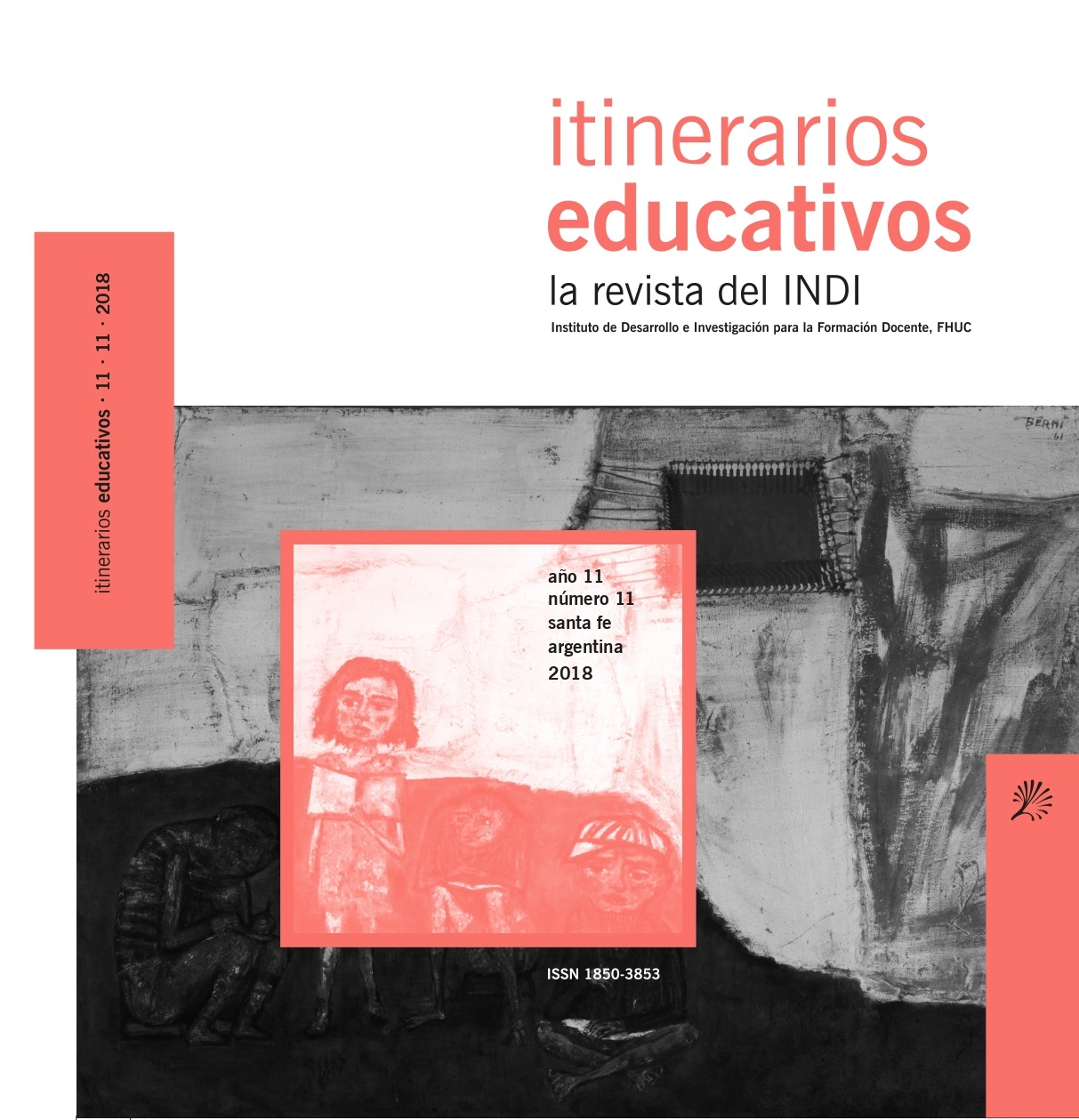Interdisciplinarity in teaching: a challenge for secondary education
DOI:
https://doi.org/10.14409/ie.v0i11.8203Keywords:
teaching, interdisciplinarity, compulsory education, inclusion, secondary schoolAbstract
This article constitutes an advance of the
current master’s thesis entitled «Curricular devices in
secondary school. An analysis from post–critical perspectives
». Institutional curricula development in secondary
school is studied in dialogue with the different
levels of decisions on curricular policies in translation
keys (Casimiro Lopes et al., 2013). To this end, the
general objective of this work is to analyze how institutional
curricular devices are designed and developed
in secondary schools, according to processes for
translating curricular policies. Specific objectives are:
1) to investigate how institutional curricular devices
enter into dialogue with curricular policies of macro and
meso levels about inclusion for secondary school; 2) to
identify which curricular devices are designed and developed
by secondary schools to guarantee compulsory
education and inclusion. By taking a first approach to
the field, it is possible to perceive that interdisciplinarity
in teaching and its connection with local social problems
constitute an institutional approach to promote inclusion
and compulsory education in secondary school, favoring
socially significant learning (Orozco Fuentes, 2006).
Downloads
Published
How to Cite
Issue
Section
License
Those authors who have publications with this magazine, accept the following terms:
The authors will retain their copyright and guarantee the journal the right of first publication of their work,
which will be simultaneously subject to the Creative Commons Recognition License that allows third parties to share
the work whenever its author and first publication this magazine.
Authors may adopt other non-exclusive licensing agreements for the distribution of the published work (eg, deposit
it in an institutional telematic file or publish it in a monographic volume) whenever the initial publication in this
journal is indicated.
Authors are allowed and advised to disseminate their work through the Internet (eg, in institutional telematic files
or on their website) before and during the submission process, which can produce interesting exchanges and increase
citations of the published work. (See The effect of open access).
















